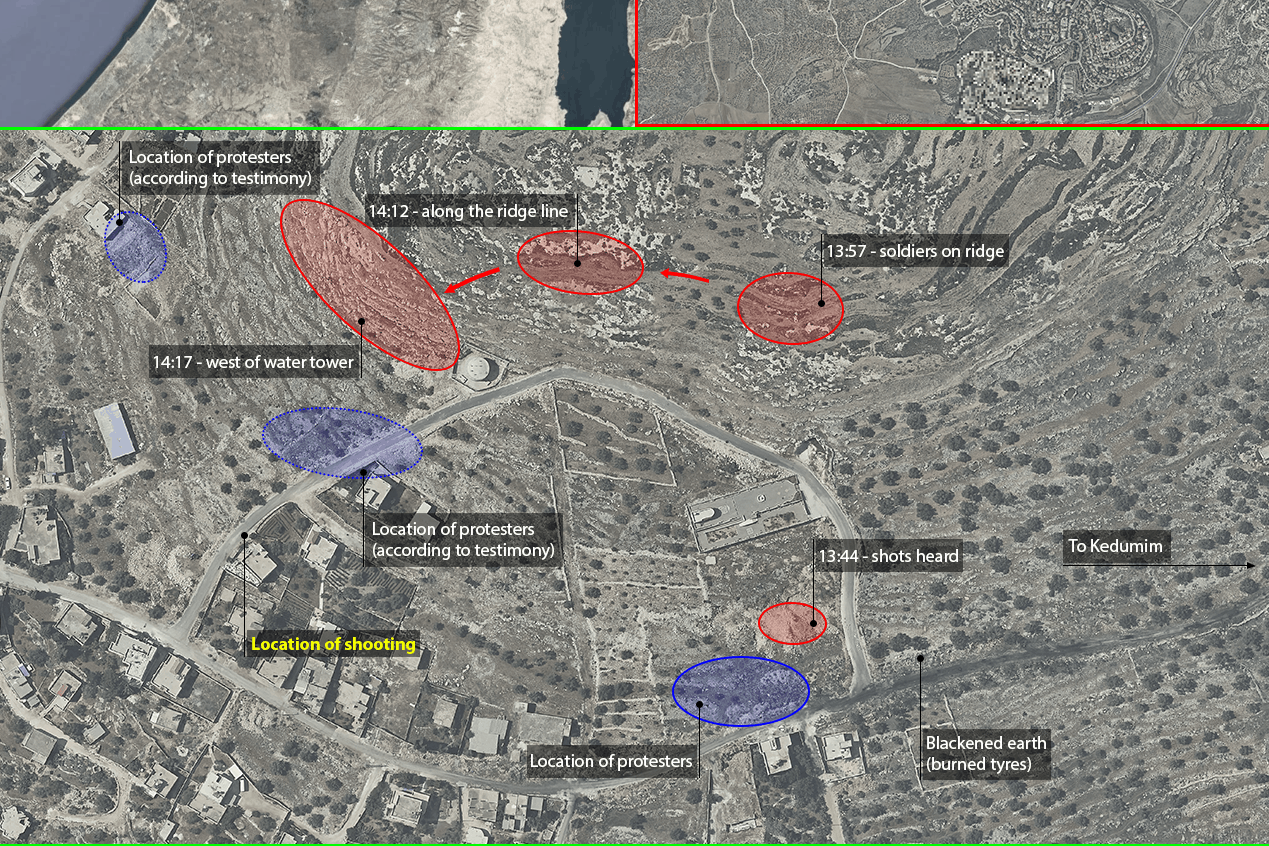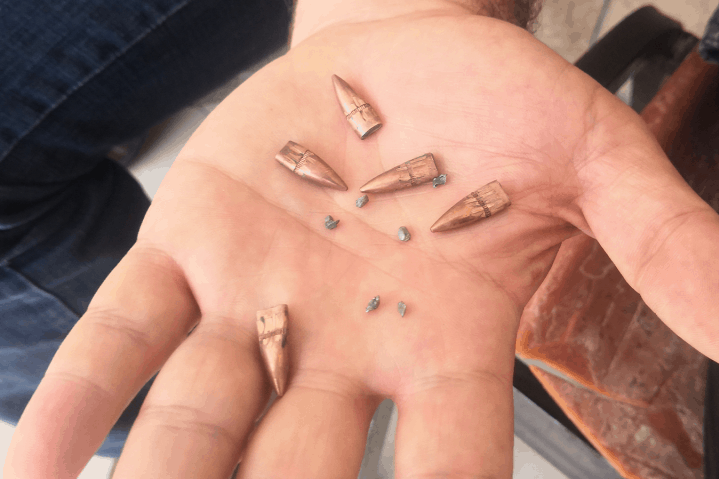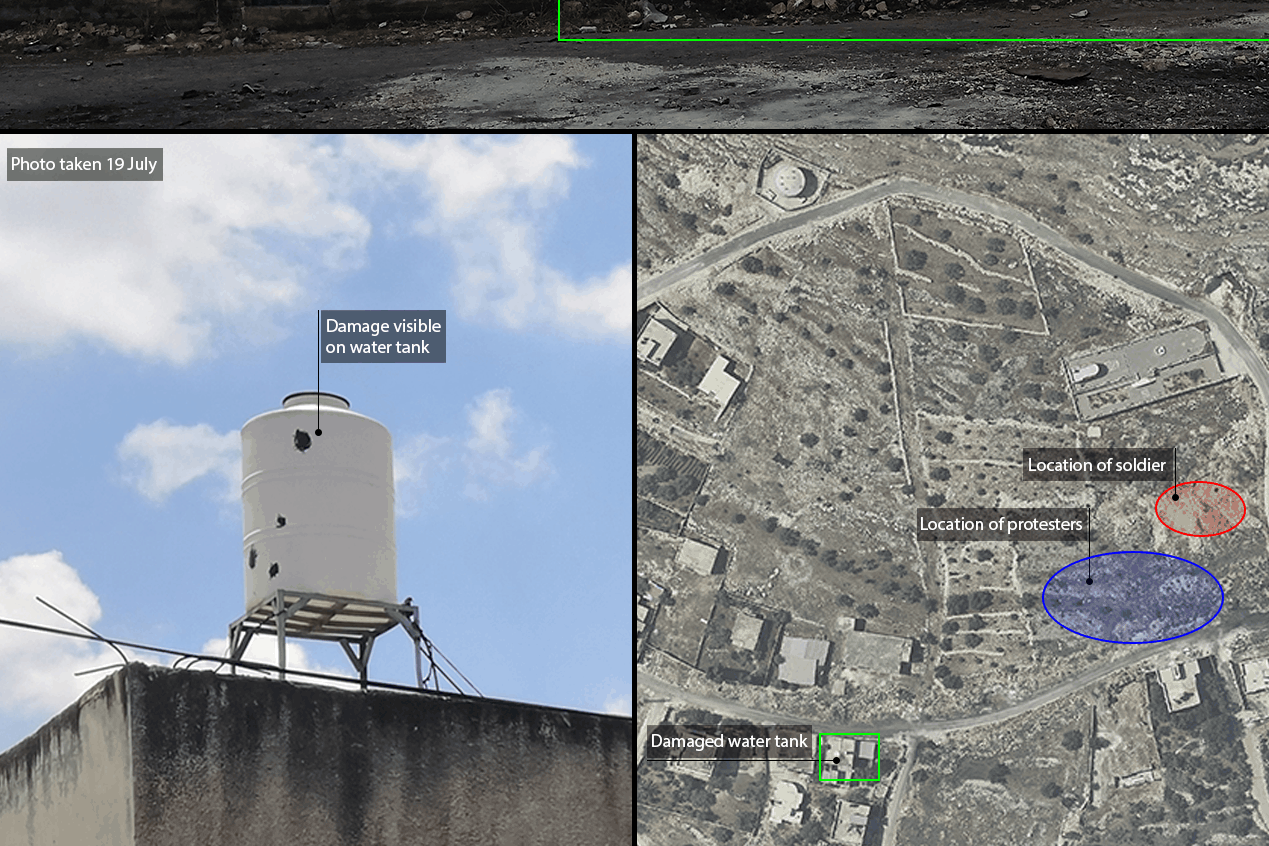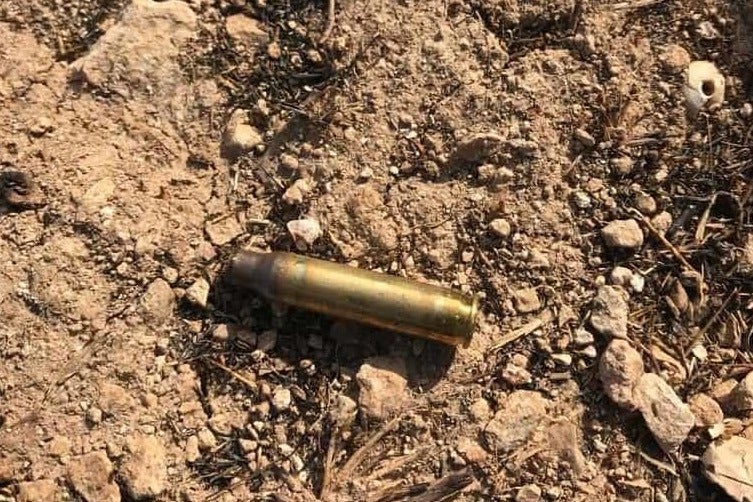British forensics team claims new evidence shows Israeli soldier's ‘live fire’ shot Palestinian boy in head
CT scans allegedly confirmed over 100 bullet fragments in brain

A damning new forensics report seen by The Independent has alleged an Israeli soldier's live ammunition - and not a rubber bullet as claimed by the IDF - shot a nine-year old Palestinian boy in the head on 12 July as he stood outside his friend’s house in the occupied West Bank town of Kafr Qaddum.
Since 2011, regular weekly protests have taken place in the village against Israeli occupation, land confiscations and the military’s closure of an access road from the village to nearby city Nablus.
Abd el Rahman Uasir Shatawi, who was in a coma following the incident, is now conscious at a rehabilitation centre in the town of Beit Jala, but unable to move more than his eyes and fingertips.
The incident happened during protests in the village, but the boy's father has said his son was standing some 100 metres away and was not involved in them.
The Israeli Defense Forces (IDF) issued a statement on the day of the incident, claiming they had used rubber-coated metal bullets [RBCM], not live ammunition, during the protests.
But a forensics report with evidence published by British experts Forensic Architecture (FA) has challenged the IDF’s claim.
The report states: “… contrary to repeated claims of Israeli officials, the available medical and image evidence, as well as witness testimony, strongly suggests Abd el-Rahman’s injuries were caused by live ammunition.”
Mobile phone footage of Israeli soldiers using live ammunition, witness testimonies and digital mapping was pieced together by the FA team.

A separate report prepared for FA by US forensic ballistics experts analysed CT scans of the boy’s brain, and at the time, allegedly confirmed over 100 bullet fragments were “still lodged inside”.
It states: “Although they [RCMB] can indeed penetrate individuals… they are not known to fragment, especially to the extent visible in the CT scans.”

The level of fragmentation, it adds, was “consistent with fragmentation seen in 5.56mm [live] rounds” and that “medical scans also showed there was no exit wound, corroborating eye-witness accounts the shot was fired from a distance of 100-120m.”

The report added that the “distance is a crucial element as 100-120m is twice the effective distance of a RCMB round.”
It presents a video of Abd buying sweets from a shop just 30 minutes before the incident took place.
It also includes mobile phone video footage of Israeli soldiers, alleged to be firing live ammunition.
Eye-witness accounts given to The Independent claim live ammunition was used on the day of the incident.
Director of the Colonization and Wall Resistance Commission of the Northern West Bank, Murad Shtewi, also a coordinator of non-violent resistance marches in Kafr Qaddum said: “Protesters didn’t shoot anything except live videos documenting sounds of fire.”
Another eye-witness statement was given to the International Solidarity Movement (ISM) via an interpreter by Riyad Shtaiwi, alleged to be the man who carried the boy to the ambulance after he was shot.
Mr Shtaiwi said he was sitting under an olive tree with his two children when he witnessed soldiers with snipers taking position atop a mountain, but was too late to warn the boy.
He said: “I looked around myself and at my children, and then I saw the child on the ground and the blood.”
An ISM activist who did not want to be named told The Independent gunshots “sounded like loud claps”, that “soldiers on the ridge were spraying bullets everywhere”, and “live bullet casings were littered across the ground where soldiers were firing at people.”

She said: “At one point protesters began running back towards the village, but going up the hill, we saw a river of blood, which friends of Abd washed away with water so his family wouldn’t see it.”
FA researcher Bob Trafford told The Independent: "This shooting is not an anomaly; Palestinian children are constantly exposed to violence as a result of Israeli military law.
“Israel's 'open-fire policy' is an instrument to enable the use of military violence against civilians.
“That violence is too often carried out with impunity, and extends well beyond the incident: the only response of state authorities in this case was to make apparently false claims, which a coalition of NGOs, activists, and analysts has worked together to expose."
According to OCHA figures on casualties between 1 January 2008 and 26 October 2019, 2,762 Palestinians were injured in Kafr Qaddum. Of these, 100 injuries were caused by live ammunition fired by Israeli forces.
During the same period, 14,478 Palestinians were injured with live ammunition fired by Israeli forces across the West Bank, Gaza Strip and (in some cases) Israel.
Responding to the incident in a July statement, OHCHR spokesperson Rupert Colville urged “Israel to review the rules of engagement of its security forces”.
He said: “Children must be afforded special protection…” and called on “Israeli authorities to conduct a thorough, effective, impartial and independent investigation into the incident, and to make sure those responsible for any wrongdoing are held accountable.”
An IDF spokesperson told The Independent: “The incident was investigated, and the findings of the investigation as well as other information was forwarded to the Military Advocate General’s Office in order to examine whether there are grounds to open a Military Police investigation.”
Join our commenting forum
Join thought-provoking conversations, follow other Independent readers and see their replies
Comments
Bookmark popover
Removed from bookmarks